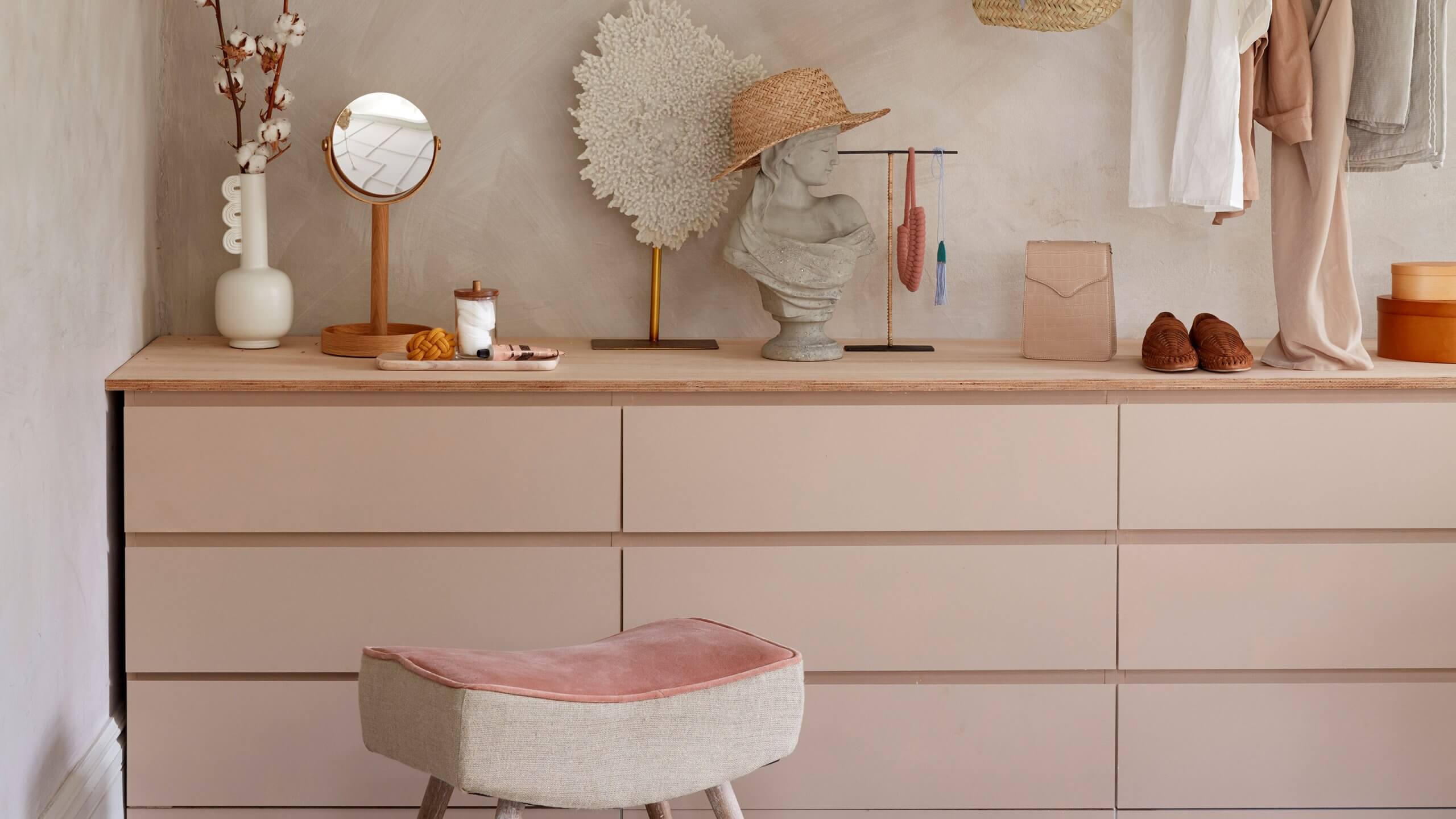
Storage furniture pieces are designed to address the perennial issue of clutter, making them the go-to storage solutions for homes of all sizes. Dressers and chests with cleverly designed drawer configurations emerge as indispensable allies in maintaining an organized living space.
Organizing Clothing and Accessories
Dressers and chests excel at providing storage for clothing and accessories. Their spacious drawers create dedicated spaces for garments, simplifying the task of keeping items neatly arranged. This becomes especially critical for individuals grappling with extensive wardrobes or restricted closet space.
A strategic approach is vital to optimizing the organization of clothing and accessories. Assigning specific drawers for distinct categories, such as tops, bottoms, or accessories like scarves and belts, eliminates confusion. This systematic arrangement ensures orderliness and streamlines the process of selecting an outfit. For further compartmentalization, smaller divisions within the drawers or drawer dividers are effective in preventing items from intermingling.
Drawer Configurations
Dressers and chests offer diverse drawer configurations, enabling individuals to tailor their choice to their precise requirements. Standard configurations encompass vertical, horizontal, or hybrid combinations of both. The selection hinges on the volume and nature of the items intended for storage.
Vertical drawers, commonly called highboys, present an excellent solution for economizing floor space. Their slender design is especially suitable for compact rooms, and they excel in accommodating neatly folded clothing and accessories. Conversely, horizontal drawers, known as lowboys, feature a broader expanse, ideal for accommodating bulkier items such as sweaters and blankets. For those desiring the best of both worlds, dressers that seamlessly meld vertical and horizontal drawers offer versatility that caters to a broad spectrum of storage needs.
Top Surface Utility
The often overlooked top surface of dressers and chests serves as a versatile area that, when exploited wisely, can enhance the overall functionality of the furniture. Beyond its primary purpose, the top surface can be harnessed for many purposes.
As a display area, it becomes a stage for showcasing decorative items like vases, photo frames, or elegant lamps. This infusion of personal flair not only augments the room’s aesthetics but also serves the practical purpose of preventing the top surface from devolving into a disorganized repository for miscellaneous items.
Alternatively, the top surface can be converted into a vanity, especially when a mirror and grooming essentials are incorporated. This arrangement creates a compact yet well-organized space for daily grooming rituals. Integrating a mirror with the dresser conserves space and streamlines the morning routine.
Vertical vs. Horizontal Storage
Choosing between vertical and horizontal storage is pivotal when selecting a dresser or chest. Each variant offers unique advantages, catering to distinct requirements and spatial constraints.
Vertical dressers, commonly known as highboys, feature a taller and narrower design. They excel in scenarios where floor space is at a premium, offering a solution that efficiently utilizes vertical space. Highboys are especially well-suited for storing folded clothing and accessories and shine in bedrooms where space is scarce.
In contrast, horizontal dressers, or lowboys, exhibit a more expansive and lower profile. This design not only augments surface area for additional purposes but can also serve as a visually striking centerpiece in bedrooms or living rooms. Their spaciousness makes them ideal for accommodating bulkier items like bedding or linens. Selecting between vertical and horizontal storage hinges on the room’s dimensions and the items’ nature, significantly influencing the furniture’s functionality and aesthetics.
Incorporating Additional Features
Modern dressers and chests often arrive equipped with supplementary features, elevating functionality and convenience. These innovations are crafted to augment the versatility and user-friendliness of these storage solutions.
A prominent addition is the inclusion of soft-close drawers. These drawers incorporate mechanisms that prevent them from closing abruptly, preserving the integrity of the dresser while injecting a touch of sophistication into daily life. No more will drawers slam shut, ensuring a quieter and more refined experience.
Another valuable enhancement includes built-in jewelry trays or compartments. These discreet storage spaces offer a secure and organized environment for safeguarding precious jewelry items. By preventing tangling and misplacement, they contribute to efficient and hassle-free access to one’s jewelry collection.
Certain dressers are further enhanced with integrated charging stations, streamlining the organization and charging of electronic devices. This not only declutters the top surface but also ensures that essential gadgets are perpetually powered up and at your disposal.
Conclusion
Dressers and chests, as versatile storage solutions, offer the means to transform living spaces into havens of organization and orderliness. By adeptly managing clothing and accessories, optimizing drawer configurations, harnessing the top surface’s utility, discerning between vertical and horizontal storage, and embracing additional features, individuals can seamlessly integrate these furniture pieces into their homes.
The incorporation of these elements ensures a harmonious blend of functionality and aesthetics. Whether residing in a cozy apartment or a spacious home, the strategic deployment of dressers and chests maximizes space and simplifies life’s daily routines. In the enduring quest to keep belongings in check and living spaces free from clutter, dressers and chests are both stylish and pragmatic investments that promise enduring satisfaction.
Rachel Simmons
Related posts
Stay connected
Today's pick
- Things to Remember While Designing Your Custom Modular Kitchen in GurgaonGurgaon now known as Gurugram is the second largest city in the state of Haryana and is a reflectiossn of an ideal modern city with futuristic goals. Witnessing rapid urbanization, it has also emerged as a hub for contemporary homes, with homeowners seeking innovative and... The post Things to Remember While Designing Your Custom Modular […]

